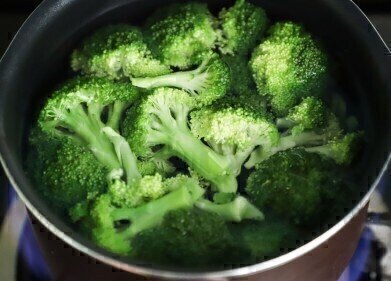Help Desk
Chromatography Goes Fishing for Toxicity in Seafood
Nov 29 2017
We get constant reminders to eat healthier from the media, doctors and even governments. Eat more fruit and vegetables, eat less saturated fat, salt and sugar, drink plenty of water and eat more fish. In fact, the advice from the NHS is to eat two portions of fish each week — including one portion of oily fish. Fresh, frozen or canned — it doesn’t matter which. But is fish always the best option? It seems it depends on how careful it is processed and stored.
Careful of scombroid poisoning
Scombroid poisoning is a type of food poisoning that we get after a particular nasty fish supper. Scombroid poisoning happens after we’ve eaten fish that contains high histamine levels. Fresh, frozen, canned or even smoked fish are all susceptible to high histamine levels when the fish has been processed or stored improperly.
The name comes from the family of fish known as Scombridae which includes mackerel and tuna. Originally it was thought that this type of food poisoning could only come from these fish— hence the name Scombroid poisoning — but it is now known that other type of fish not from the Scombridae family can cause scombroid poisoning.
Histamines — not just allergies
Histamine is a compound that is naturally produced in the body that serves many different functions. It acts as a neurotransmitter, a regulator in the gut and takes part in the immune response to foreign invaders. But perhaps is most widely known for its part in the inflammatory response and being itchy — hence the antihistamine tablets. But it can also act as a toxin.
Histamine is produced in the flesh of certain fish when as they start to decay — in fact, it is produced by the decarboxylation of histidine in the flesh, which is in turn due to bacteria from the fish’s intestines. Scombroid poisoning can often be difficult to detect as excess histamine doesn’t affect the smell or taste of the fish. And while it is known that storing the fish at room temperature can cause histamine levels to increase, a new report has looked at the packaging of fish on the effect of histamine levels.
Is that fish packed properly?
In a study published in the Journal of Food and Drug Analysis, a team has investigated the effects of packaging in a variety of storage conditions on the histamine levels in the fish. The fish studied was milkfish — an important food in Asia and Pacific regions. They measured the histamine levels using liquid chromatography — a technique discussed in the article, Ion Suppression from HPLC Columns.
They found that vacuum packaging reduced the level of histamines when compared to polyethylene packaging at both 4C and 15C — an observation attributed to the lack of oxygen in vacuum packaging. They report that vacuum packaging is the best type of packaging if the temperature of the fish is likely to fluctuate. How has your fish been stored?
Digital Edition
Chromatography Today - Buyers' Guide 2022
October 2023
In This Edition Modern & Practical Applications - Accelerating ADC Development with Mass Spectrometry - Implementing High-Resolution Ion Mobility into Peptide Mapping Workflows Chromatogr...
View all digital editions
Events
ACS National Meeting - Fall 2024
Aug 18 2024 Denver, CO, USA
Sep 04 2024 Chiba, Tokyo, Japan
Sep 04 2024 University of Warwick, Coventry, UK
Sep 10 2024 Rockville, MD, USA
Plastics Recycling World Expo Europe
Sep 11 2024 Brussels, Belgium














